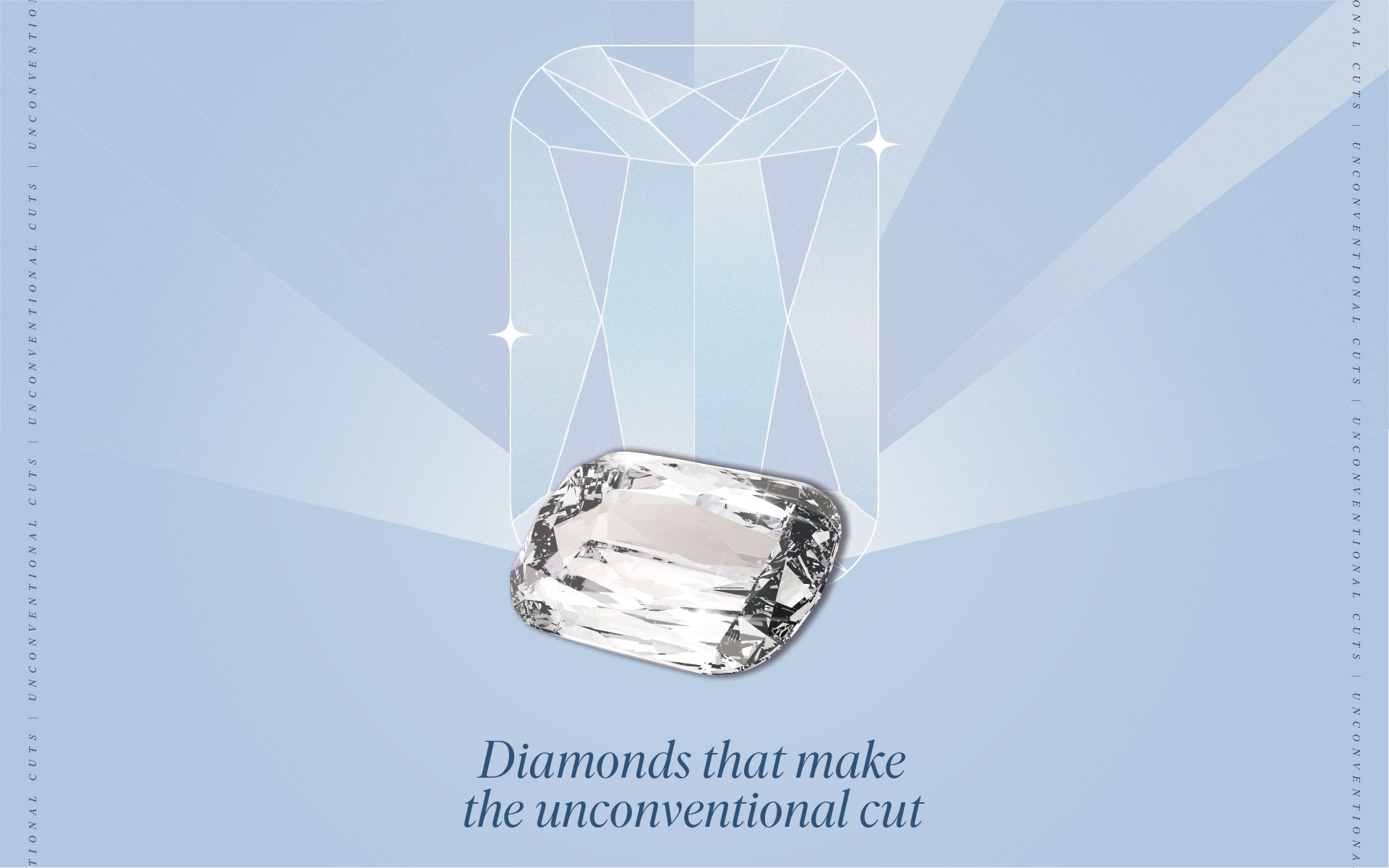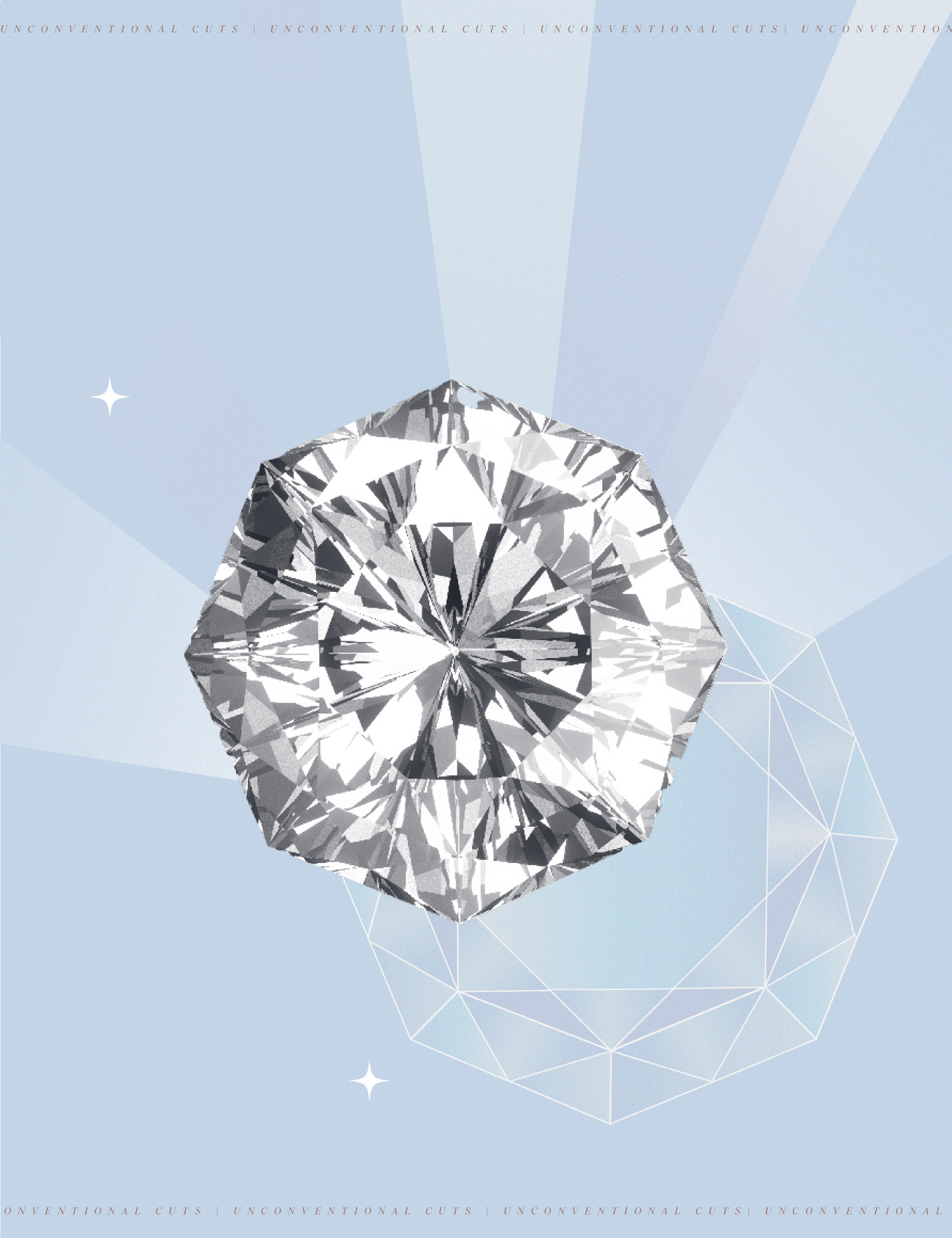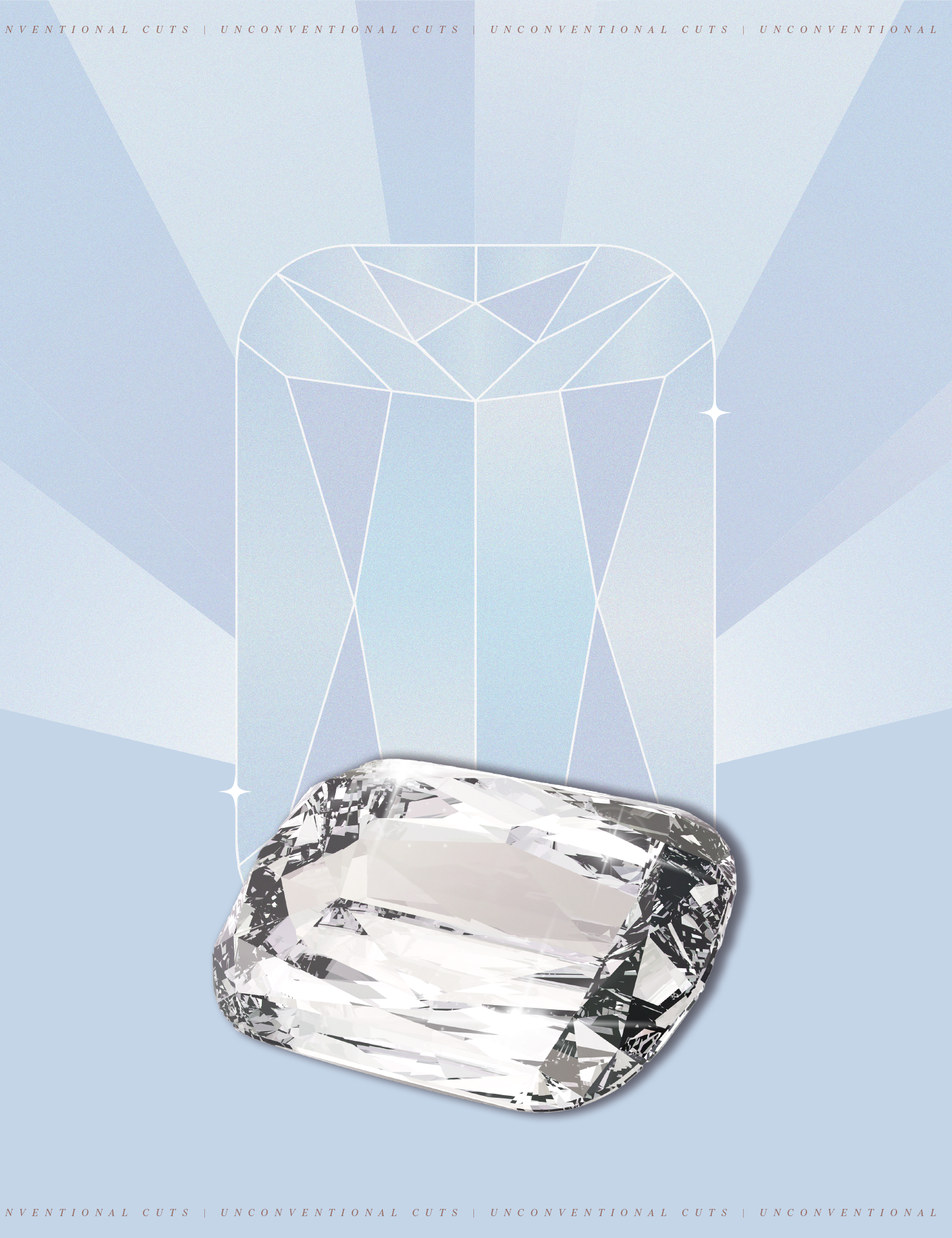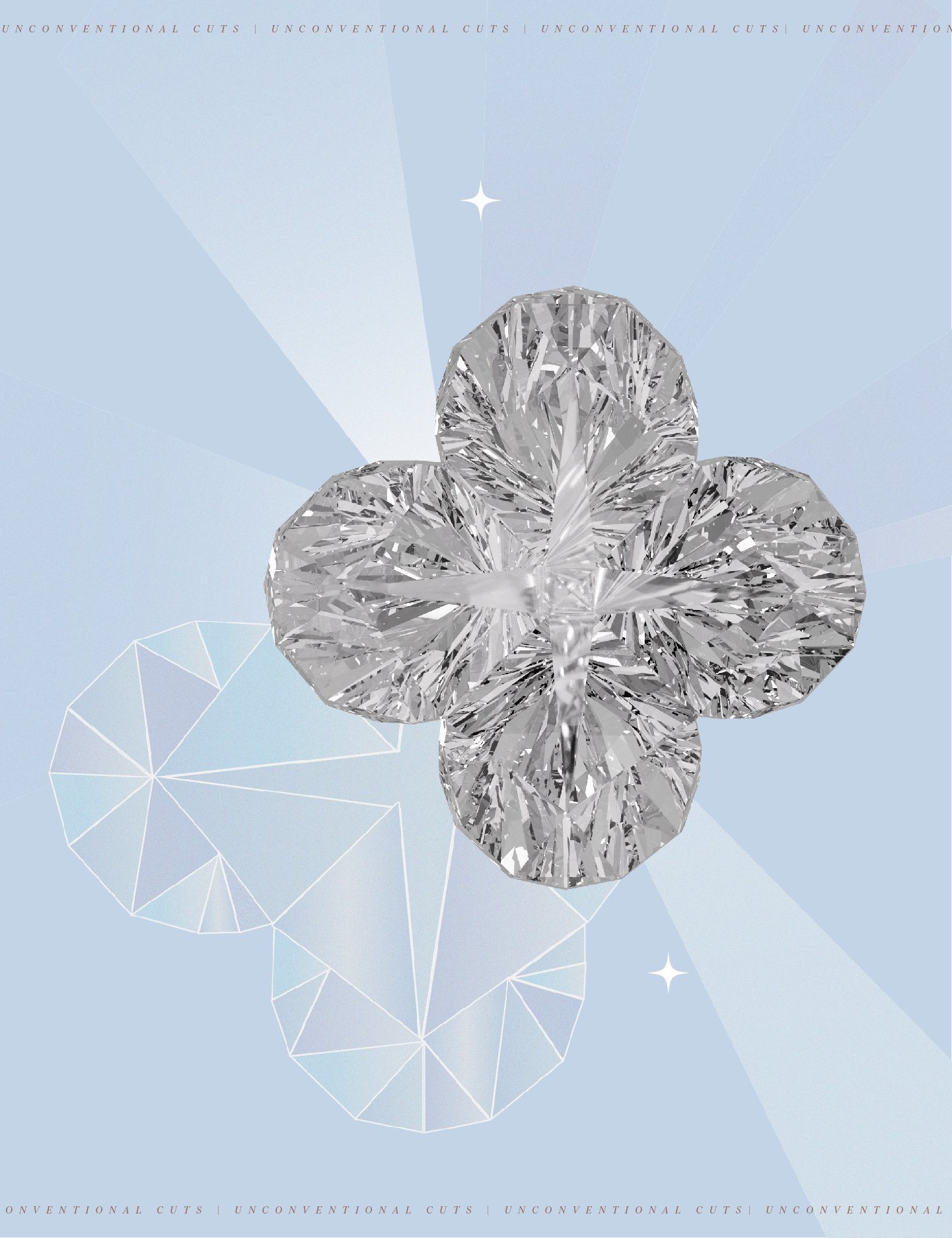Unconventional Diamonds That Made the Cut

Ask anyone to name a few cuts of diamonds, and you’ll hear answers like – the Round cut, Princess cut or Cushion cut. While these are household names, there are lesser-known diamond cuts that truly make for a pleasant surprise in the world of natural diamonds. Behind these unique cuts lies a story that is as captivating as the cut itself.
What adds to the allure of these hard to find diamond cuts is that they have been patented and are sold only by select brands. So if you’re a diamond connoisseur or someone looking for a custom diamond ring, take a look at these one-of-a-kind cuts.
The Eighty-Eight; a sure shot at good fortune
According to some Asian beliefs, the number 8 is viewed as good fortune’s ultimate symbol.
To capture the same, the Eighty-Eight cut was created. The fruit of years of research, this cut accentuates the natural diamond’s inherent brilliance through careful engineering and placement of the facets.
With 88 facets across 8 sides, even the slightest tilt of this cut creates a tornado of light and a reflective performance like no other.
Any owner of The Eighty-Eight cut is sure to turn heads with this unconventional natural diamond cut.

The Ashoka: delight for the eyes
Named after one of the most influential Indian Kings of his time, the Ashoka cut is as fascinating as Ashoka Maurya. According to the legend, the diamond has the ability to ward off sadness and spread joy.
Boasting 62 facets, it is reminiscent of the Cushion cut albeit with subtle differences. One of the main differentiating factors of this cut is that it has been adjusted to an elongated rectangular shape with softer round edges.
The elegant Ashoka cut can not be made out of just any diamond, only a diamond that is larger and longer than average, can be used to craft the cut. What makes the Ashoka cut so incredibly rare in the world of natural diamonds, is that it’s a cut that can only be created on rough diamonds weighing 3 carats or more. This makes the Ashoka cut as expensive as it is unique. The modern rendition of this extraordinary cut is only available with William Goldberg.
It is a versatile cut, perfect for a bridal adornment and goes well with new-age engagement rings.

The Lily Cut: the pride of Louis Vuitton
When it comes to seeing the best of technology, it doesn’t get better than the Lily cut. The Lily cut, along with the Crisscut, were the first patented diamonds offered by Lili Diamonds in 1996.
True to its name, this cut is modelled after the delicate petals of the lily, and is fashioned to have smooth lines and 77 painstakingly polished facets. Designed to the utmost perfection, the Lily cut produces a distinct internal light reflection that gives the diamond’s heart an unending sensation of depth.
All Lily cut diamonds are only used in Louis Vuitton jewellery thanks to an exclusive agreement Lili Diamonds came into with the fashion house. The four petals of the Lily cut, according to Louis Vuitton, are a good fit for the four-petal flower shape that frequently appears in their famous motifs.

Bead Cut: whiter, the better
Let’s start with the basics. A diamond that has been faceted and drilled makes a diamond bead.
While a briolette is an elongated, pear or grape-shaped natural diamond with triangular facets, a diamond bead is completely spherical, and may have any shape, ranging from a round to a disc.
It is drilled meticulously by a very few experts in the world and is innately found in India alone.
Diamond beads are available in a variety of hues, that ranges from yellow champagne to brown, although, as with most diamond cuts, whiter, brighter beads cost more than beads of other colours.
The drill hole becomes a crucial component, when considering buying the Bead cut. Too few diamond beads have wide enough holes to properly thread the wire through them. Whereas, larger holes, like those seen in pearls, become unachievable because diamond beads reflect the hole’s line across their entire bodies. Drill holes can occasionally be somewhat expanded, but only at the cost of some of the diamond’s radiance.

Asprey Cut: when contemporary meets classic
The Asprey cut is an ultimate example of a contemporary interpretation of a traditional design- the Cushion cut.
The diamantaire, Gabi Tolkosky believed that Cushion cut had more potential than what meets the eye, he noticed the possibility for inserting the Asprey “A” inscription around the natural diamond’s margins because of its rounded shape, and that’s how he discovered the splendid, Asprey cut.
Made to maximise light refraction, the Asprey cut has 61 facets and the diamonds’ colour grades range from D to G, while their clarity ranges from flawless to VS2. Asprey Cut diamonds typically weigh between 0.50 and 3 carats or more, though larger stones can be customised. Unlike other diamond cuts, no machines are involved in crafting this cut.
A micro-set diamond surround and various diamond settings are frequently used to complement the cut that makes for an ultimate engagement ring.
These cuts are certain to remain distinctive in the world of modern fashion, not only because of their intricate composition, but also due to their rarity.
So, look out for these inimitable jewels and you’ll be sure to leave a lasting impression. A natural diamond with these unconventional cuts are also sure to serve as a perfect memoir of your most beautiful memory.
